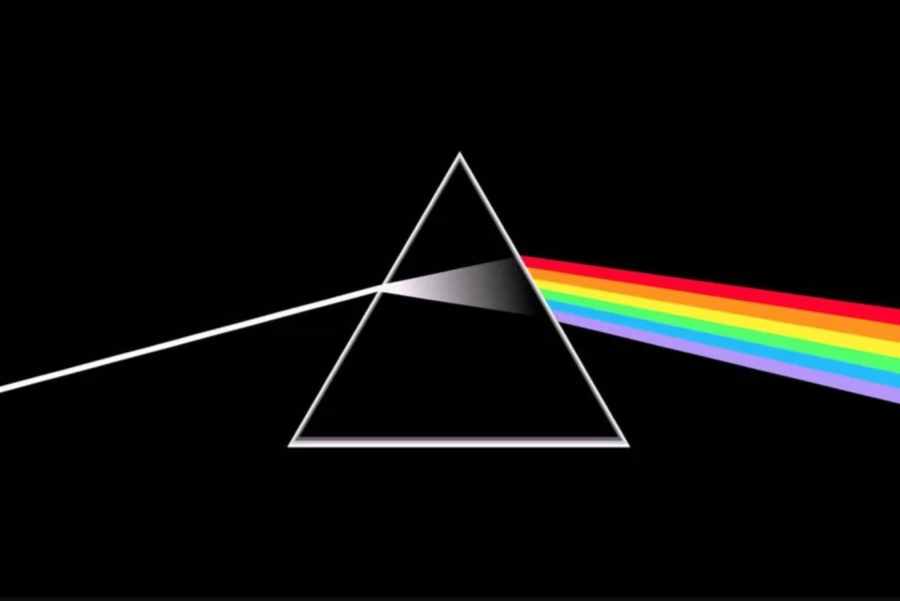The Dark Side of the Moon: 50 Years Later
March 24, 2023
Fifty years ago, on March 1, 1973, Pink Floyd would release what would be their eighth studio album, titled The Dark Side of the Moon. Prior to its release, Pink Floyd had seen some artistic success with great songs such as “Echoes”, released in the album Meddle in 1971, which heavily influenced The Dark Side of the Moon. However, Pink Floyd was widely considered to be unable to produce a commercially successful album due to their psychedelic and highly experimental style of music. Production of the album began at Abbey Road Studios on May 31, 1972. Within two weeks they had developed enough of the album that they could experiment with it during the concerts of the Meddle album tour. The following year, they would release one of the greatest albums of all time.
The album was met with immediate commercial success, with over 45 million albums sold, and currently holds the record for most consecutive weeks in the Billboard Top 200 album with 724 consecutive weeks, a number that is not likely to ever be replicated. This success was definitely deserved, as the album has some of the best songs of the 20th century, such as “Money,” “Us and Them,” “Brain Damage,” and “Eclipse,” not to mention the songs which I believe to be vastly underrated like “On the Run,” which is arguably the most experimental song in the album.
I knew very little of the album before listening to it, other than some of the stats above and that Mr. Clark could sometimes be seen wearing a shirt displaying the album’s famous cover. Therefore, I had pretty high expectations, and admittedly I felt extremely underwhelmed at first listen. However, the album’s amazing guitar solos, particularly in “Time” and “Money,” prompted me to listen to it again and again, to the point where I began to detect some of the underlying philosophical meaning behind the songs and the album as a whole, a message that arguably rivals that of Bob Dylan. For instance, “The Great Gig in the Sky” is often interpreted as symbolizing the acceptance of the struggles of life, followed by “Money,” a social commentary on corporate greed, followed by “Us and Them,” a political song protesting against the Vietnam War. However, despite its philosophical and political nature, the album never feels like it’s preaching to the listener in a way that’s self-indulgent or condescending, and the message never hinders the quality of the album, unlike in most modern political songs and albums. This is primarily because it never underestimates its audience and portrays the album’s meaning through metaphors and symbolism. Indeed, a 45-minute TED talk could be written about the meaning behind The Dark Side of the Moon.
A side note that I thought was pretty interesting is a conspiracy theory some stoners came up with in the 1990’s called “The Dark Side of the Rainbow.” It states that if you sync up the classic movie The Wizard of Oz with The Dark Side of the Moon set on repeat, there is a decent amount of time where the song matches with the actions on screen. For instance, Dorothy begins running right at the line in the song “Time” which reads, “No one told you when to run. You missed the starting gun,” and Dorothy wakes up in her home in Kansas right at the line, “Home. Home again.” These instances are found throughout the movie. Either way, the album provides a good film score to an otherwise relatively boring movie, and even provides added nuance when “Money” is played in the Emerald City scene, or when “Us and Them”, an anti-war song, is played during the attack of the flying monkeys. Even the album cover has white light turning into color, much like the movie turns from black and white into color.
There will likely never be such an experimental album to attain such critical and commercial success as The Dark Side of the Moon, with its extremely unconventional production and the psychotic musical style of Roger Waters, David Gilmore, and the rest of the band. The album even contains four different songs that contain few to no words. Many people don’t like the album, and I certainly could see why. Regardless, it was released before most of the teachers were our age or even born, and it has still stood the test of time and remains one of the most successful and greatest albums ever made.
